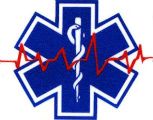This is your morning Open Thread. Pour your favorite beverage and review the past and comment on the future.
Find the past “On This Day in History” here. (Click on image to enlarge.)
April 21 is the 111th day of the year (112th in leap years) in the Gregorian calendar. There are 254 days remaining until the end of the year.
On this day in 1777, British troops under the command of General William Tryon attack the town of Danbury, Connecticut, and begin destroying everything in sight. Facing little, if any, opposition from Patriot forces, the British went on a rampage, setting fire to homes, farmhouse, storehouses and more than 1,500 tents.
The British destruction continued for nearly a week before word of it reached Continental Army leaders, including General Benedict Arnold, who was stationed in nearby New Haven. Along with General David Wooster and General Gold Silliman, Arnold led a contingent of more than 500 American troops in a surprise attack on the British forces as they began withdrawing from Danbury.
Sybil Ludington (April 16, 1761- February 26, 1839), daughter of Col. Henry Ludington, was a heroine of the American Revolutionary War who became famous for her night ride on April 26, 1777 to alert American colonial forces to the approach of enemy troops.
Ludington’s ride started at 9:00 P.M. and ended around dawn. She rode 40 miles, more than twice the distance of Paul Revere, into the damp hours of darkness. This is especially remarkable because modern day endurance horse riders using lightweight saddles can barely ride such distances in daylight over well marked courses (see endurance riding). She rode through Carmel on to Mahopac, thence to Kent Cliffs, from there to Farmers Mills and back home. She used a stick to prod her horse and knock on doors. She managed to defend herself against a highwayman with her father’s musket. When, soaked from the rain and exhausted, she returned home, most of the 400 soldiers were ready to march.
The memoir for Colonel Henry Ludington states,
Sybil, who, a few days before, had passed her sixteenth birthday, and bade her to take a horse, ride for the men, and tell them to be at his house by daybreak. One who even now rides from Carmel to Cold Spring will find rugged and dangerous roads, with lonely stretches. Imagination only can picture what it was a century and a quarter ago, on a dark night, with reckless bands of “Cowboys” and “Skinners” abroad in the land. But the child performed her task, clinging to a man’s saddle, and guiding her steed with only a hempen halter, as she rode through the night, bearing the news of the sack of Danbury. There is no extravagance in comparing her ride with that of Paul Revere and its midnight message. Nor was her errand less efficient than his. By daybreak, thanks to her daring, nearly the whole regiment was mustered before her father’s house at Fredericksburgh, and an hour or two later was on the march for vengeance on the raiders.
The men arrived too late to save Danbury, Connecticut. At the start of the Battle of Ridgefield, however, they were able to drive General William Tryon, then governor of the colony of New York, and his men to Long Island Sound.


 Welcome to the Stars Hollow Gazette‘s
Welcome to the Stars Hollow Gazette‘s 
 On this day in 1775, British troops march out of Boston on a mission to confiscate the American arsenal at Concord and to capture Patriot leaders Samuel Adams and John Hancock, known to be hiding at Lexington. As the British departed,
On this day in 1775, British troops march out of Boston on a mission to confiscate the American arsenal at Concord and to capture Patriot leaders Samuel Adams and John Hancock, known to be hiding at Lexington. As the British departed,
Recent Comments